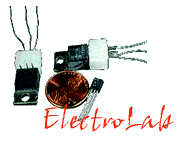






![]()
BASIC
BIPOLAR JUNCTION TRANSISTOR: SCIENTIFIC ASPECTS
click here to learn more about the development of this
transistor
This is one of the earliest transistors that is considered to be fundamentally important.
 Construction:
Construction:
The Bipolar Junction Transistor (BJT) consists of three different regions, sandwiched together. The outer two layers are of the same type, while the middle layer is different. Hence we have two different types of BJTs -
n-p-n transistors with a p-region sandwiched between two n-regions
and
p-n-p transistors with n-region sandwiched between the two p-regions.
In either type, the region that occurs only once (p-region in n-p-n or n-region in p-n-p) is very small with very few charge carriers (i.e. holes or electrons) and is called the Base. The other two regions are bigger in size.
Working:
We shall consider the working of an n-p-n transistor. In the use of this transistor, the current is made to enter through one n-region.
Let us now review the passage of current through the passage of current within the
transistor:

Thus, the transfer of current from a low resistor circuit to a high resistor circuit is successfully obtained. Here, the former n-region may be said to emit the electrons into the latter n-region which collects these electrons. So the region where the current enters the transistor is called the Emitter and the other region is called the Collector.
The same working is true for p-n-p transistors, but the electrons are replaced by holes.